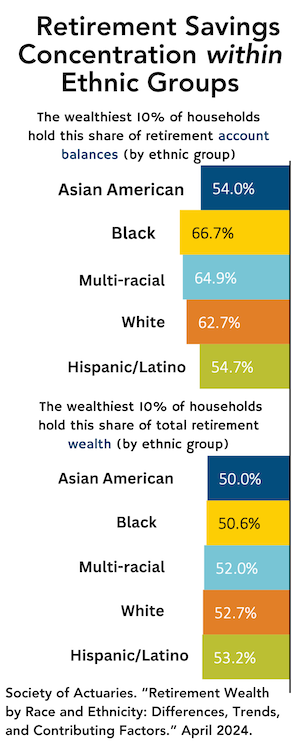Last Friday, January 14, was the deadline for industry comments on the Department of Labor’s proposed amendments to regulations surrounding target-date fund disclosures, and most of comments were submitted on the final day.
There weren’t many. Only 30 comment letters on TDF regs were filed since late November 2010 with the DoL’s Employee Benefit Security Administration (EBSA). But many came from organizations—or from the general counsels of those organizations—that represent millions of people and trillions of dollars.
We’re talking about Vanguard and Fidelity (managers of 60% of TDF assets), the American Council of Life Insurers (variable annuity issuers), the Profit-Sharing Council of America (plan sponsors), the Defined Contribution Institutional Investors Association (asset managers), the Investment Company Institute (mutual funds), AARP (retirees), etc.
(You can find all the comments at the EBSA website.)
The industry’s comments pointed in many directions, but boiled down to a half dozen concerns that regulations might make the whole TDF mess even messier. For instance, makers of TDFs fear that fresh warnings about the risks of TDFs might give the impression that TDFs are any riskier than other investments.
In the same spirit of damage control, industry lawyers wanted to make sure that regulations for TDFs don’t apply to managed accounts in retirement plans, and that new regulations don’t simply duplicate old regulations—a justifiable fear—and that EBSA won’t set too short a deadline for compliance.
New TDF disclosure requirements appear to be inevitable, however, mainly because TDFs blew up during the financial crisis. Yes, they’ve since bounced back. But the crisis revealed that, as a class, they lacked the standardization and transparency that you might expect of a product that had been approved as a qualified default investment alterative (QDIA) for broad use by America’s least astute investors. The primary problem was a dangerous overweighting in equities under the fuzzy rationale that retirees with inadequate savings should own risky assets in order to avoid running out of money.
Now the activist administration that the financial crisis helped usher into office—specifically, EBSA chief Phyllis Borzi—wants to make sure the TDF industry doesn’t go back to business as usual simply because the funds have rebounded (with massive help from the Fed, but that’s another story). Hence the current verbal duel between regulators and lawyers.
Sadly, most (but not all) ignored the 800-pound irony in the room: Why negotiate over disclosures when the people who invest in TDFs don’t read disclosures? TDFs are designed for plan participants who don’t have the time, expertise or inclination to get involved in saving or investing. Eighty percent of them, according to one EBSA comment letter, abandon their TDFs at retirement anyway.
The most pertinent and compelling comments came from those who pointed out what should be obvious: that plan sponsors and plan fiduciaries are responsible for ensuring that plan participants have investment options that will help them accumulate adequate savings by their retirement age with minimal risk. DC plan fiduciaries, not regulators, should be the ones demanding investment options that don’t have hidden vulnerabilities.
One fog-clearing letter came from Joe Nagengast, a principal at Target Date Analytics, LLC, Marina del Rey, Calif.. He posited that a TDF’s “ floor objective is to deliver at target date accumulated contributions intact plus inflation, and a target objective is to grow assets as much as possible without jeopardizing the floor objective.” A TDF’s pursuit of other objectives—like solving longevity risk by investing in equities—only jeopardize the primary objective,” he wrote.
Regarding the all-important fiduciary issue, Ron Surz, president of Target Date Solutions, of San Clemente, Calif., wrote in his EBSA comment letter: “Proposals that focus on participant enlightenment are misguided for two reasons: participants don’t choose TDFs and they don’t read disclosures.
“Fiduciaries, namely plan sponsors and their advisors, choose target date funds, and they should read disclosures, although it would seem that they don’t. So why is this an important distinction? You wield the stick of potential litigation, probably best focused on fiduciaries rather than fund companies.” Surz, a frequent critic of the mainstream TDF industry, wants fiduciaries to insist on zero equity allocation at retirement.
Yes, I know that TDFs might be better than nothing, and that most TDFs are sold by circumspect outfits like Vanguard and Fidelity. But, at the margins, TDFs can be guilty of, if not murder, then reckless endangerment. They’ve succeeded because they’re a convenient way to provision a large, captive, undiscriminating audience, and because they bear the QDIA stamp of approval (with its attendant moral hazard)—not because they have intrinsic merit. Custom TDFs might represent an improvement, but that’s a different story, and the latest round of comments doesn’t appear to address them.
© 2011 RIJ Publishing LLC. All rights reserved.


